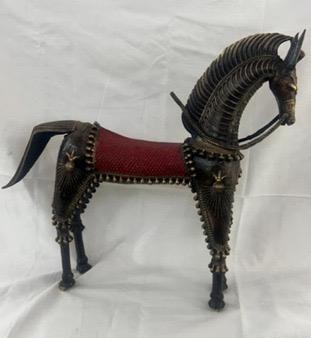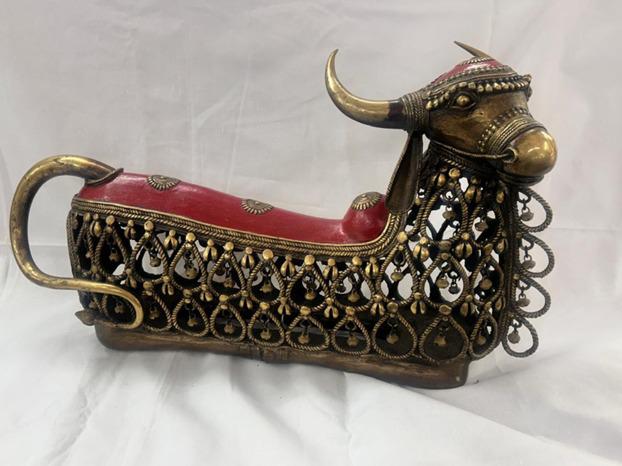|
|

|
|

|
|||||||||
|
|||||||||
| Dhokra Metal Craft
The Dokras are now dispersed over the western part of West Bengal in four districts namely Bankura, Purulia, Midnapore and Burdwan and are mainly concentrated in Bankura and partly in Purulia. The Dokras who lived in a small suburb called Rampur on the fringe of Bankura town have shifted to Bikna. These Dokras make various kinds of images and figures of gods and goddesses, birds and animals, like Lakshmi, Lakshmi-Narayan, Siva-Parvati flanked by Ganesh and Kartik, elephants, horses, owls, peacocks etc.  The Dokras of Netkamla and Bindhyajan do not make ritual objects, like images of deities and animal figures. Their main items of production are measuring bowls or paikona of different sizes and mal or anklets and ghunghru or tinkling dancing bells for the Santhals. The Dokras of Lakshmisagar make images of deities and figures of animals and sell their products in local markets and fairs.  In Purulia the Dokras are widely known as Mals or Malhars to common people, although the Dokra artisans are considered lower in social rank. In Purulia, there are some semi-nomadic Malhars, who move about from village to village, take shelter in community houses, outhouses or temporary camps under trees and make various kinds of metal products by the lost wax process. They make paikona, dhunuchi, pancha pradeep, anklets, ghunghrus with mixed aluminium by the lost wax process but do not make any images or figures. Process: First the craftsman start preparing the casting furnace and the wax image. The wax and the resin (dhuna) should be correctly mixed with oil to make the necessary lump. The image to be made must be vividly visualized by the craftsman through meditation, until it is ready to be modeled in the prepared lump of wax. When the wax-image is done it has to be purified with pancha- varna or the five powdered pigments. The joints of the component parts of the wax model should be reinforced with copper rods or nails before being covered by the clay mould. These supports may be chiseled off after the wax model melts away in the heat of the furnace. The craftsman sculptures a wax model of the metal object desired, makes a mould of clay, pours molten metal into a hole in the mould, breaks away the clay, brings out the object and finally smoothes and polishes it. The most important rule, in this metal craft is played by non-metals like wax, resin and clay and the artistic work is done with them. The chief function of the metal is to get transformed into liquid under heat and then to get solidified again inside the mould. The deities and the animals which are now made by the Dokras either under governmental patronage or independently are definitely much inferior in quality and craftsmanship to the older ones. |
|||||||||